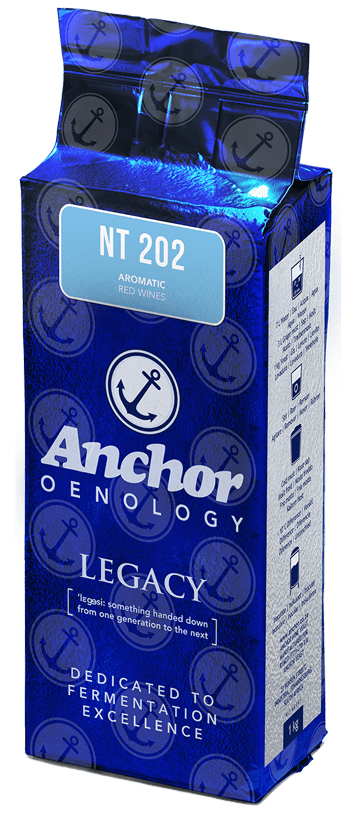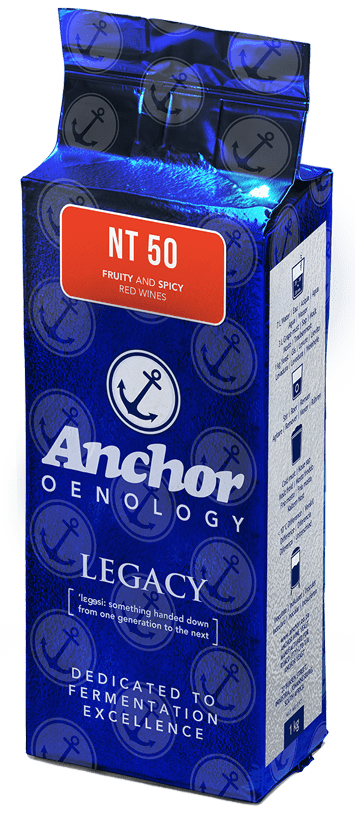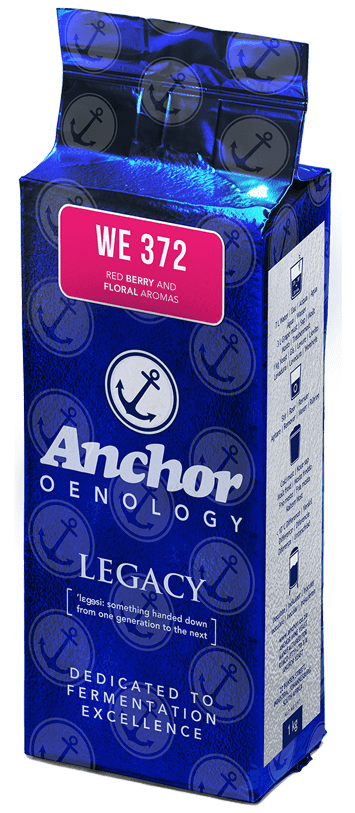-
FOR DIRECT INOCULATION. Fermivin® VR5 is suitable for producing red wine for maturing over extended periods. It promotes optimum extraction of polyphenols and stabilisation over time. Fermivin VR5 helps develop blackcurrant, prune and Morello cherry aromas and spicy hints. It is especially recommended for use with the maceration enzyme Rapidase® Extra Fruit to optimise colour extraction and stabilisation by forming pyrano-anthocyanins.
-
NT 202 enhances red berry aromas in Cabernet Sauvignon and Merlot and blackberry, black currant, tobacco and prune aromas in Pinotage. It is recommended for the production of red wines with or without wood maturation. NT 202 has a high alcohol tolerance, good fructose utilisation and a stimulating effect on malolactic fermentation when compared to other red wine strains. It is therefore especially suitable for the vinification of high sugar musts where the resulting high alcohol at the end of fermentation can potentially cause sluggish or stuck alcoholic fermentations and/or problematic MLF’s.
-
NT 50 enhances red berries (strawberry, raspberry and cherry), black berries (blackberry and blackcurrant) and spicy aromas in red wines. It is suitable for wine with or without wood maturation. It is most suited for vinifying Shiraz (Syrah), Cabernet Franc, Zinfandel, Grenache, Pinot noir, Pinotage and Gamay noir.
-
WE 372 enhances red berry and floral aromas in red wines. It is recommended for the vinification of most red grape varieties; Cabernet Sauvignon, Cabernet Franc, Merlot, Shiraz/Syrah, Pinotage and Pinot noir. WE 372 is also recommended for the production of semi-sweet white wines, as the fermentation is easily slowed down by lowering the temperature to 10°C.
-
INOFINE V is a formula made up exclusively of pea proteins, particularly used for applications involving must clarification and wine fining, in both cases combined with mineral-derived additives (bentonite or silica gel) or tannins. This formula is used in the same way as gelatin. Coupled with a fining agent, it provides efficient suspended matter sedimentation in wines. In laboratory trials and on wines, lees is shown to settle better in relation to fining procedures that use animal-origin fining agents.
-
TANIN SR is an extract of concentrated catechin tannins with tannic acid content greater than 70%. Added during maceration of red wine it helps to stabilise colour and improve structure. It can also be used with white wine to impart roundness.
-
PHOSPHATES TITRES contains nitrogen to ensure regular yeast multiplication and complete and regular sugar utilisation. It is recommended for sparkling wine production. PHOSPHATES TITRES also contains thiamine chlorhydrate which helps maintain yeast health. The diammonium phosphate contained in PHOSPHATES TITRES, since it is consumed rapidly, encourages the start of alcoholic fermentation. diammonium phosphate ensures an even supply of nitrogen right to the end of fermentation. By encouraging fermentation of the yeast rather than respiration, diammonium phosphate optimises fermentation efficiency.



